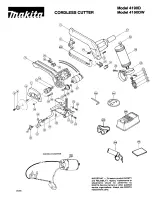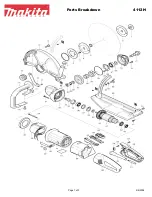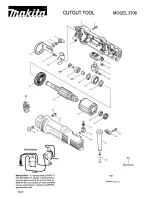
7
©Alcor 2011 All rights reserved
OPERATION
Before Operation
Check to see that engine is serviced properly. Read Honda operation and safety instructions. Handle gasoline with extreme
caution. Make certain belt guards and blade guards are in place and secure and that there are no signs of damage or wear of
these parts. Never operate machine with damaged or missing guards. Serious injury may otherwise result.
Engine Start-Up and Operation
After checking the blade installation (refer to the blade installation section), put the depth control in the idle position and
make certain the control is set so that blade does not come in contact with the roof deck (Fig. 3) Pushing down on the
handles will allow the depth control to slide to the idle position.
At this point, after you have read through all of the instructions, the roof cutter should be ready for operation.
Position saw where work is to be done, start the engine and allow to warm up. (Please refer to the engine manufacturer’s
owner’s manual). Turn handle on depth control bar slowly clockwise to lower cutting blade into roof. Adjust depth of cut
just deep enough to penetrate the top layers of the roofing felts, and not more than about half the thickness of the insulation.
Push the cutter forward only as fast as the blade will readily cut into roof. If you want to stop cutting, push down on the
handles to lock depth control in idle position, letting the blade rotate freely without cutting the roof. Take every precaution
not to cut through metal deck or any other deck under roof. This cutter is designed to cut only tar, asphalt, imbedded gravel,
felts, and insulation. To avoid flying stones and excessive wear to blade, always sweep loose gravel and clear roof before
cutting. Cut in a straight line only. Stop forward motion of cutter whenever people are in front of you. Always set the
machine in its idle position turning or changing direction.
Fig. 3 Roof Cutter in idle position





























